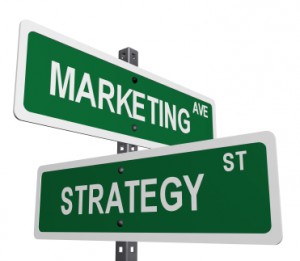 Almost anything can drive the need for a bigger return on your email investment. Is the C suite asking for more proof of the success of your email program? Perhaps you want a bigger budget but management wants a bigger payback. Or maybe it’s simply your job to improve the email marketing program at your organization.
Almost anything can drive the need for a bigger return on your email investment. Is the C suite asking for more proof of the success of your email program? Perhaps you want a bigger budget but management wants a bigger payback. Or maybe it’s simply your job to improve the email marketing program at your organization.
Whatever the reason for the focus on email marketing ROI, your email strategy is key to increasing it. Whether you have a strategy in place that needs revisiting or you’re starting from scratch, below are six critical elements to include in that strategy, elements that will incrementally lead you to that ROI and more: a way to continually improve for even better results from each campaign.
#1 Your List
Just about every sale starts with your in-house email list. And your list is only as responsive as it is quality-based. Adding names willy nilly to your list or—worse yet—buying email lists might lead to numbers but it doesn’t lead to sales. You can grow your email list, but your email marketing strategy must include smart and savvy methods for doing so. Make sure your strategy outlines how list growth will happen over how big the list should get.
#2 Email Integration
Your strategy must include integration among different business systems. Your email service provider (or platform, if you have an in-house solution) has to be integrated with other data-collecting systems such as your web analytics, ecommerce and CRM system. Without that cross-platform integration, your data will exist in silos, and your ability to offer relevant, personalized customer experiences will be severely impaired.
You also must get more sophisticated and integrate social media with email. It doesn’t have to be costly or hard. For example, Country Outfitters uses social media to give away cowboy boots (on the surface) and grow their in-house email list (in the background). They have grown their email list to millions this way, and the cost of acquisition is very low. In addition, their fan base on Facebook now numbers well over 6 million.
#3 Relational Databases
Sophisticated email integration makes possible the advanced segmentation that enables you to divide your list into smaller, targeted groups. To really get to know your customers, integrate your data, and send targeted email messages using advanced segmentation, you’re likely going to need to use a relational database, not a flat one.
A relational database format lets you keep data in different tables and then relate them to one customer or group for use in targeted campaigns. Flat databases can’t support this kind of flexibility.
Not every email service provider supports relational databases, however, so that’s something you’ll need to look into with yours.
#4 Email Analysis
Simple email reporting tools won’t be enough if your goal is a strategy that increases your email ROI. You’ll need to make sure that strategy includes finding and using a tool for the kind of email analysis you likely won’t get with your ESP or in-house solution.
It is the email analysis that will make your data make sense. You need to know not only how many people opened your email, but who they were and what they clicked on so you can react to their actions. You also want to know who didn’t act, so you can re-market to them and attempt to re-engage them.
Email analysis gives you the data you need to dig deeper into subscriber behavior and trends. This is how you gather the actionable information you need in order to engage your audiences. Because if you can’t make sense of your data, it doesn’t matter how much data you have.
#5 Re-Marketing
Although the abandonment rate varies from study to study, we can safely say an average of 67% of online shoppers abandon a website or cart without purchasing. That’s almost 7 out of 10 people who will say “bye” before they buy.
These are obviously people interested in buying because they got as far as the website, and even started the purchasing process, in some cases. We can’t always know the reasons for abandoning a site or a purchase in progress, but we do know what to do about it: re-market. Prospects who abandon represent money left on the table. Your email marketing strategy should include a way to re-market to those who were close–but not close enough–to buying. Re-marketing can also include sending follow-up emails to those who did not open a message (and you’ll be able to identify these folks with the right email analysis).
#6 Engagement
Although the first five elements we’ve talked about above are imperative for an email marketing strategy that will improve your ROI, perhaps none are as critical as engagement…yet they are the steps to engagement. And what is engagement? Engagement is the customer who is happy to see your email in his or her inbox, who knows the emails you send are relevant to him or her, who is more likely to open your email, more likely to click through, and more likely to buy. Engagement is the key to ROI. And the email strategy elements described above are the key to engagement.
By including on these six tactics in your email marketing strategy, you are sure to see an increase in your ROI, and ideally a continually improving one. Along the way, remember to test, test and test again, making sure you’re strategy is making a difference.
And if you need help from some email technology experts who are well versed in strategy, just call on ClickMail.



